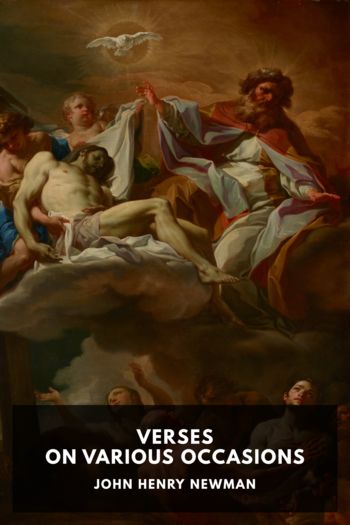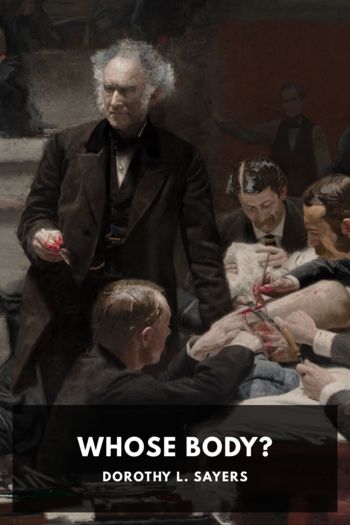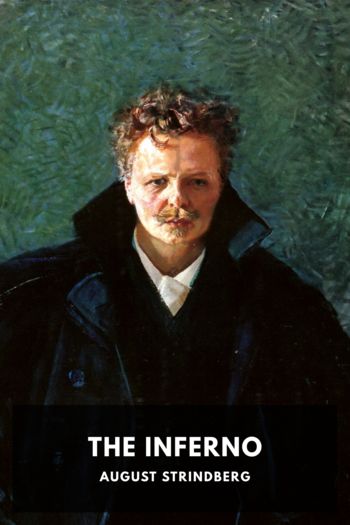The Divine Comedy, Dante Alighieri [best thriller novels of all time TXT] 📗

- Author: Dante Alighieri
Book online «The Divine Comedy, Dante Alighieri [best thriller novels of all time TXT] 📗». Author Dante Alighieri
The city of Florence, which, in Canto XXV 5, Dante calls “the fair sheepfold, where a lamb I slumbered.” It will be remembered that St. John the Baptist is the patron saint of Florence. ↩
Not in Italian, but in Latin, which was the language of cultivated people in Cacciaguida’s time. ↩
From the Incarnation of Christ down to his own birth, the planet Mars had returned to the sign of the Lion five hundred and eighty times, or made this number of revolutions in its orbit. Brunetto Latini, Dante’s schoolmaster, Tresor, I Ch. CXI, says, that Mars “goes through all the signs in II years and I month and XXX days.” This would make Cacciaguida born long after the crusade in which he died. But Dante, who had perhaps seen the astronomical tables of King Alfonso of Castile, knew more of the matter than his schoolmaster, and was aware that the period of a revolution of Mars is less than two years. Witte, who cites these tables in his notes to this canto, says they give “686 days 22 hours and 24 minutes”; and continues: “Five hundred and eighty such revolutions give then (due regard being had to the leap-years) 1090 years and not quite four months. Cacciaguida, therefore, at the time of the Second Crusade, was in his fifty-seventh year.”
Pietro di Dante (the poet’s son and commentator, and who, as Biagioli, with rather gratuitous harshness, says, was “smaller compared to his father than a point is to the universe”) assumed two years as a revolution of Mars; but as this made Cacciaguida born in 1160, twelve years after his death, he suggested the reading of “three,” instead of “thirty,” in the text, which reading was adopted by the Cruscan Academy, and makes the year of Cacciaguida’s birth 1106.
But that Dante computed the revolution of Mars at less than two years is evident from a passage in the Convito, II 15, referred to by Philalethes, where he speaks of half a revolution of this planet as un anno quasi, almost a year. The common reading of “thirty” is undoubtedly then the true one.
In Astrology, the Lion is the House of the Sun; but Mars, as well as the Sun and Jupiter, is a Lord of the Lion; and hence Dante says “its Lion.” ↩
The house in which Cacciaguida was born stood in the Mercato Vecchio, or Old Market, at the beginning of the last ward or sesto of Florence toward the east, called the Porta San Pietro.
The city of Florence was originally divided into Quarters or Gates, which were, San Pancrazio on the west, San Pietro on the east, the Duomo on the north, and Santa Maria on the south. Afterwards, when the new walls were built and the city enlarged, these Quarters were changed to Sesti, or Sixths, by dividing Santa Maria into the Borgo and San Pietro Scheraggio, and adding the Oltrarno (beyond the Arno) on the southern bank. ↩
The annual races of Florence on the 24th of June, the festival of St. John the Baptist. The prize was the Pallio, or mantle of “crimson silk velvet,” as Villani says; and the race was run from San Pancrazio, the western ward of the city, through the Mercato Vecchio, to the eastern ward of San Piero. According to Benvenuto, the Florentine races were horse-races; but the Pallio of Verona, where the prize was the “Green Mantle,” was manifestly a footrace. See Inferno XV 122. ↩
Between the Ponte Vecchio, where once stood the statue of Mars, and the church of St. John the Baptist. ↩
Campi is a village between Prato and Florence, in
“The valley whence Bisenzio descends.”
Certaldo is in the Val d’ Elsa, and is chiefly celebrated as being the birth place of Boccaccio, “true Bocca d’ Oro, or Mouth of Gold,” says Benvenuto, with enthusiasm, “my venerated master, and a most diligent and familiar student of Dante, and who wrote a certain book that greatly helps us to understand him.”
Figghine, or Figline, is a town in the Val d Arno, some twelve miles distant from Florence; and hateful to Dante as the birthplace of the “ribald lawyer, Ser Dego,” as Campi was of another ribald lawyer, Ser Fozio; and Certaldo of a certain Giacomo, who thrust the Podestà of Florence from his seat, and undertook to govern the city. These men, mingling with the old Florentines, corrupted the simple manners of the town. ↩
Galluzzo lies to the south of Florence on the road to Siena, and Trespiano about the same distance to the north, on the road to Bologna. ↩
Aguglione and Signa are also Tuscan towns in the neighborhood of Florence. According to Covino, Descriz. Geog. dell’ Italia, p. 18, it was a certain Baldo d Aguglione, who condemned Dante to be burned; and Bonifazio da Signa, according to Buti, “tyrannized over the city, and sold the favors and offices of the Commune.” ↩
The clergy.
“Popes, cardinals, bishops, and archbishops, who govern the Holy Church,” says Buti; and continues: “If the Church had been a mother, instead of a stepmother to the Emperors, and had not excommunicated, and persecuted, and published them as heretics, Italy would have been well governed, and there would have been none of those civil wars, that dismantled and devastated the smaller towns, and drove their inhabitants into Florence, to trade and discount.”
Napier, Florentine History, I 597, says:—
“The Arte del Cambio, or moneytrade, in which Florence shone preeminent, soon made her bankers known and almost necessary to all Europe. … But amongst all foreign nations they were justly considered, according to the admission of their own





Comments (0)